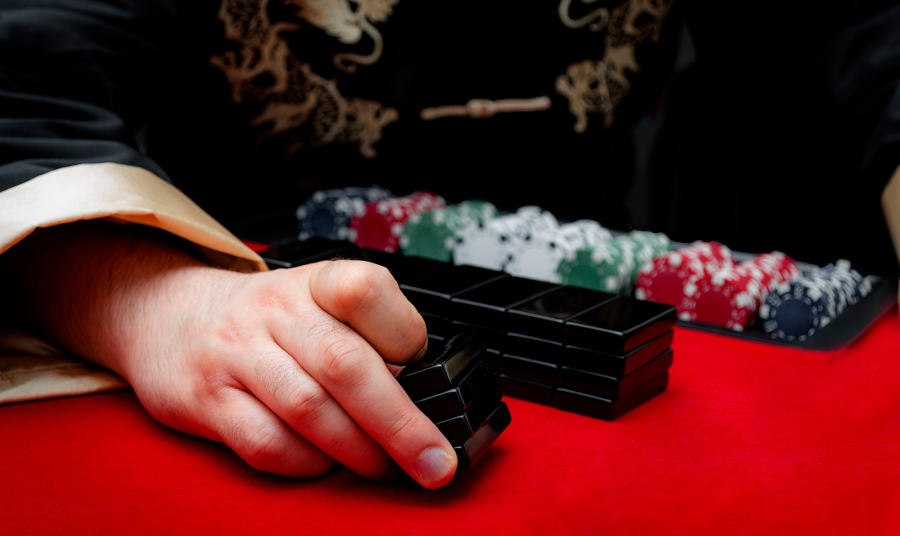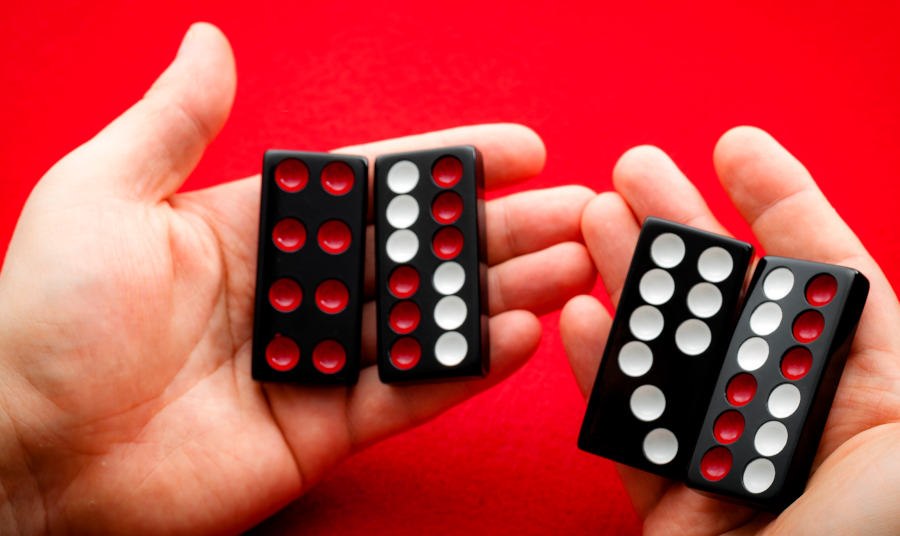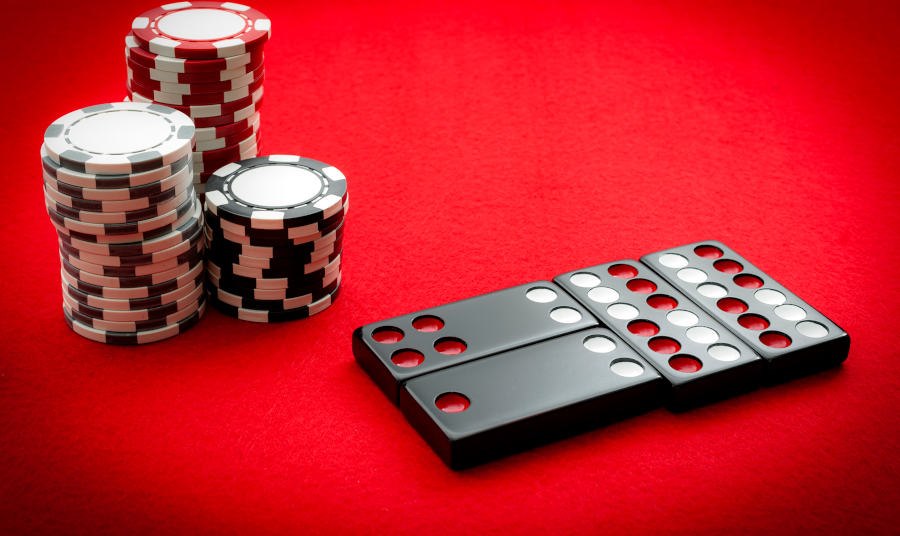
How to Play Pai Gow Tiles: Everything You Need to Know
Pai Gow Tiles is a captivating and strategic game that combines elements of ancient Chinese traditions with the excitement of modern casino play. Often seen as the card game, Pai Gow's lesser-known sibling, Pai Gow Tiles, uses domino-like tiles instead of playing cards. The game requires skill and strategy, making it a favorite among experienced players looking for something more engaging than your typical casino table game. If you're interested in learning how to play Pai Gow Tiles, this guide will walk you through the basics. What is Pai Gow Tiles?
Pai Gow Tiles is a classic game that originated in China and has been played for centuries. Unlike the card-based version of Pai Gow, Pai Gow Tiles uses a set of 32 Chinese tiles (similar to dominoes) used to create two hands—a high hand and a low hand—that you set against the dealer's hands. The objective is to beat both of the dealer's hands to win the round.While Pai Gow Poker and Pai Gow Tiles share the same core concept of creating two hands to compete against the dealer, Pai Gow Tiles is more complex due to the unique tile rankings and combinations. The game requires players to understand how to pair tiles effectively, which can take time to master.
Pai Gow Tiles is popular among seasoned gamblers who enjoy its blend of luck, strategy, and deep cultural roots. The game is heavily influenced by traditional Chinese culture, with tile rankings rooted in ancient symbolism. Unlike most casino games, Pai Gow Tiles offers a slower pace, making it ideal for players who enjoy a strategic challenge. Once you grasp the rules and nuances, it can be an incredibly rewarding game to play.
How to Play Pai Gow Tiles
Pai Gow Tiles is a strategic casino game that combines the elegance of Chinese tradition with the excitement of gambling. Although the rules may seem complex at first, learning the basics of setting up the game, understanding the tile rankings, and mastering the gameplay can provide you with a unique and engaging casino experience.Setting up the Pai Gow Tiles Table
A Pai Gow Tiles table is similar in layout to a blackjack table, accommodating up to six players and a dealer. The game uses a set of 32 Chinese tiles arranged face-down and shuffled thoroughly before each round.Players sit around a semi-circular table, with the dealer in the center. The tiles are placed in eight stacks of four tiles each, forming what is traditionally known as the "woodpile." A random number generator or dice roll determines which player receives the first set of tiles. The game always starts with the dealer counting from their position based on the result of the dice. Each player, including the dealer, is dealt four tiles. The objective is to create two hands—one high hand and one low hand—that will be compared against the Banker's hands. Any player can be designated the Banker.

Rules and Gameplay Basics
The gameplay revolves around creating two hands from your set of four tiles. The four tiles are divided into two hands: A high (back) hand consisting of two tiles and a low (front) hand consisting of the remaining two tiles. The goal is to arrange your tiles so that your high hand outranks the Banker's high hand and your low hand outranks the Banker's low hand.If both of your hands beat the Banker's corresponding hands, you win the round. If only one of your hands wins, it's a push, and no money changes hands. If both of the Banker's hands beat yours, you lose your bet. If your hands have the same rankings as the Banker's, the Banker wins.
Pai Gow Tiles is a game of skill and strategy. To be successful, players need to understand how to pair their tiles for optimal strength.
How Tile Rankings Work in Pai Gow
Understanding how tiles are ranked is crucial for success in Pai Gow Tiles. The game uses a unique ranking system rooted in Chinese tradition, which may take time to master. The tiles are ranked based on symbolic pairings and specific numerical values.Here's how the rankings work:
- Pairs (Supreme Pair, Wong, Gong):
- The highest-ranked combinations are known as the Supreme Pair, Matched Pairs, specific un-matched pairs, followed by Wong and Gong pairs.
- Numerical Value of Tiles:
- For non-paired hands, the tiles are assigned numerical values.
- To calculate the value of a hand, add the values of the two tiles together. If the sum exceeds 9, only the last digit is used (similar to the scoring system in baccarat). For example, if your two tiles add up to 14, the value is 4.
- Special Pairs and Combinations:
- Certain tiles have special names and ranks that override their numerical values.
- The Gee Joon tiles (the 3-6 and 2-1 tiles) are considered wild and can act as either a 3 or a 6 to form stronger combinations.
- Tie-Breakers:
- If your hands have the same numerical value as the dealer's, the tie is decided by comparing the highest individual tile in each hand.
Types of Hands in Pai Gow Tiles
In Pai Gow Tiles, the hands you create from your four tiles are the key to winning against the dealer. The game's strategy revolves around arranging your tiles into the best possible high (back) and low (front) hands. Understanding the types of hands, recognizing key pairs, and setting your tiles correctly can greatly enhance your odds of winning.Recognizing Key Pairs and Unique Combinations
The most powerful hands in Pai Gow Tiles come from creating specific pairs and combinations. Here's a breakdown of the key pairs and special combinations:- Supreme Pair (Gee Joon):
- The highest-ranking pair in the game, the Gee Joon tiles (4-2 and 2-1), are wild cards and can be used as either a 3 or 6, making them highly versatile.
- This combination beats all other hands.
- Matched Pairs:
- Any matching pair with the same configuration. For example, both tiles include an 8-point tile with 3 and 5 points to create the 8.
- Certain Un-Matched Pairs:
- Four specific un-matched pairs are next in the rankings: a Mixed 9, Mixed 8, Mixed 7, and Mixed 5. Both tiles have the same number of points for each of these, but they have different combinations to reach the total. For example, one 8 may have 3 and 5 points, while the other may have two sets of 4 points.
- Wong:
- A hand featuring a 9 tile paired with either a 2 or a 12 tile.
- Gong:
- Consists of an 8-tile paired with a 2 or a 12-tile.
Setting Up Hands the House Way
Casinos often use a specific strategy known as the House Way to set their hands. This method is designed to maximize the house's advantage while ensuring a consistent approach to gameplay. As a player, understanding how the House Way works can help you anticipate the dealer's hands and adjust your strategy accordingly.Under the House Way, the dealer will always arrange their tiles into the best possible high and low hands according to a predetermined set of rules. The strongest combination will typically be placed in the high hand, while the second-best tiles will form in the low hand.
If you're unsure about how to set your own tiles, mimicking the House Way can be a safe approach. Casino dealers are known to use it to minimize their own risk.

Pai Gow Tiles House Edge and Payouts
Like all casino games, Pai Gow Tiles has a house edge that players should know. The house edge for Pai Gow Tiles generally ranges between 1.5 percent and 2.5 percent, depending on the casino's specific rules. If you push (i.e., tie) with the dealer, you typically neither win nor lose your bet, making Pai Gow Tiles a game with lower volatility than others. The game pays even money (1:1) on winning bets, but some casinos may take a small commission (usually around 5 percent) on certain winning hands.
You can lower the house edge by learning to set your hands effectively by practicing with the key pairs and understanding the House Way. You can also lower the house edge by looking for tables with more favorable commission rates or no-commission options.
